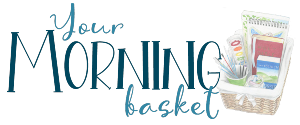Have you ever looked at something and dismissed it only to have a closer look later and wonder what you were thinking? I have taken a second and closer look at Living Books Curriculum over the past few days and am really liking what I see.
Keep in mind that kindergarten is still two years away for us, so curriculum research is really just a hobby of mine right now. It is so fun to look at, though. This post is really just me thinking out loud.
A few very glowing reviews on a message board the other day sent me over to the LBC website once again. I had been over there a year or so ago and liked what I saw at first glance, but was also somewhat daunted by the price. I was one their email list for a while and loved the newsletter articles. I also loved the fact that the curriculum was the closest to Charlotte Mason in a Box that you can get.
Charlotte Mason-style appeals to me greatly, but I never thought I could do it because many of the Charlotte Mason helps out there (Ambleside Online, Mater Amabilis, Simply Charlotte Mason) give books lists and very loose schedules, but little else in the way of scheduling help. Some homeschoolers love that. For me it would be a recipe for disaster. I would be constantly scheduling and never getting any schooling done. I really need things fairly planned out for me. (This is what drew me to Winter Promise in the first place. Now I am finding with IRTL that it is a little hyper-scheduled for me.)
Things I am liking about LBC:
- It is scheduled, but not too much so. It tells you what to read each week. (Unlike the ones above that tell you what to read each term, and WP which tells you what to read each day.) Then it give suggested activities for the week. It works on an eight-week term with a ninth-week for assessment and catching up (just like Charlotte Mason’s own schools). The assessment activities are wonderful. Very much finding out what your child knows about a subject and not trying to reveal what they don’t know through tricky questioning.
- The activities are a good mix of crafty and non-crafty. I see this type of curriculum working very well with building notebooks. There seems to be a few (just enough) craft-type things from looking at the samples, but if not those are easily added in with other resources.
- It goes by grade, not topic. While this can be off-putting to those schooling more than one child, the message boards and FAQ give examples of how to combine things for multiple children in history and science. The nice thing is, you don’t have to decide where to go next – it is planned out. The history cycle is six years from ancients to moderns. American and World History are studied simultaneously, so that “slows things down” even more. I think this is a great pace for elementary school.
- Living Books! The book suggestions look great. I would probably keep a child’s history encyclopedia on hand for reference, but I love that the reading come from living sources for history and science.
- It includes: Bible, Language Arts (gentle grammar, handwriting, Shakespeare – Julius Caesar in grade 3 anyone? – poetry, and literature), art and art appreciation, music appreciation, geography, nature study, storytelling, world history, American history, and science. You have to add your own math (after K) and foreign language, but that is it. Note that you don’t do all of these subjects every day.
- It practices the CM method of short lessons. The included material for a school day takes about 2.5-3 hours to complete. Still time to add math and eventually foreign language and still have plenty of time for play and personal interests. We could still add another subject or some other activities if we wanted and have a very manageable school day.
- Easy substitutions. I can see a couple of places (mainly grammar and writing) I would substitute different materials. Due to the looseness of the schedule this would be easy to do.
- It includes recitation and storytelling. I think kids really need practice in oration. Have you tried to carry on a conversation with the average 13yo?
So what about the cost I was so worried about before:
- I didn’t realize it includes SO MANY subjects. Honestly I think it works out to be much cheaper than WP because of all it includes. (With WP you have to buy history, science, and LA separately.)
- I priced out a package separately and managed to save $165 off the packaged price of the Foundation (Kindergarten) Year. I found a few books on Paperback Swap (cost of shipping only!), many used on Amazon, and a few new on Amazon. From LBC, you would only need to order the LBC exclusives like the teachers handbook and the books they print themselves. This is great if you are going to do some substitutions with program components, too. If you have a good library system (we do not) then your price could be much cheaper.
- Their profits go to charity. If you want to use the program As Is, and don’t want to do the legwork to piece together your package, it is great to know that you are supporting LBC’s Education in a Box program with your purchase.
This certainly gives me much to think about with the old homeschooling plan.
- Homeschooling Boys with Durenda Wilson - April 12, 2024
- What About Lab Sciences? with Dr. Moon - March 29, 2024
- Can I Teach Everything My High Schooler Needs to Know? - March 15, 2024
